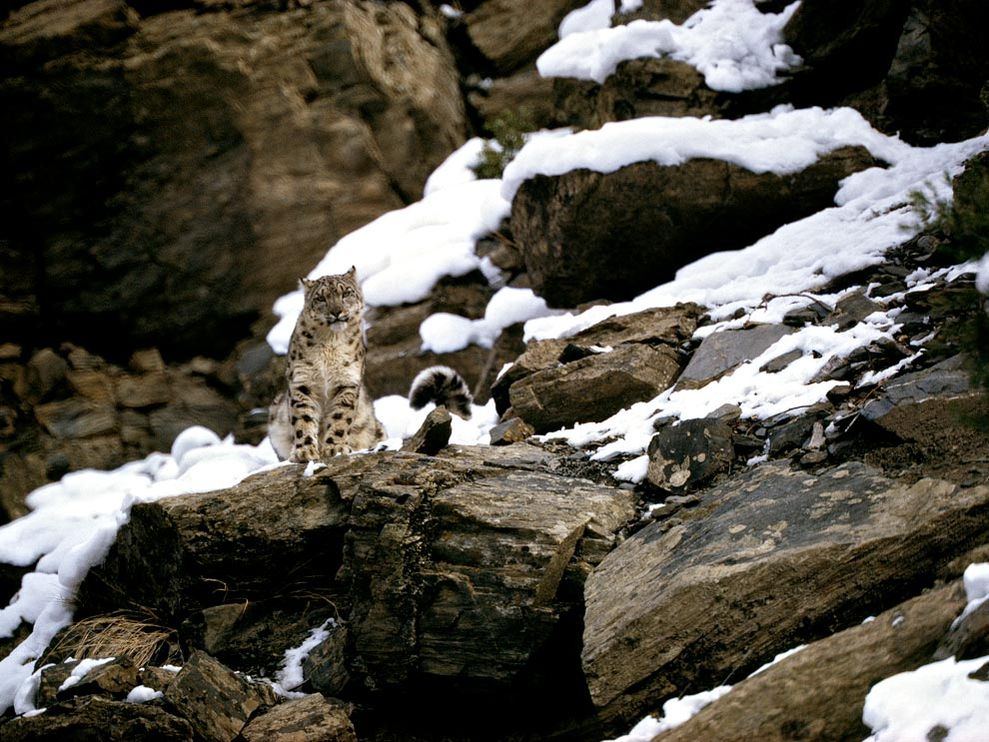Among snow leopard range countries, China has the most habitat and is believed to harbor the largest number of snow leopards. We do not know exactly how many snow leopards exist in the wild because the species is very difficult to study and count. Due to the snow leopard's elusive, solitary nature and the remoteness of its habitat, scientists must often rely on indirect methods to estimate population sizes.

How many snow leopards there used to be in the past is also unknown. We do know that the snow leopard has already disappeared from some areas where it used to live, such as some parts of Mongolia. In addition, we know that the number of snow leopards in certain parts of their range, such as in the Kyrgyz Republic, has recently declined due to excessive poaching.
The snow leopard is listed on the World Conservation Union's (IUCN) Red List of Threatened Species as "Endangered," the same classification given the panda and the tiger. The IUCN placed the snow leopard on its Red List in 1972
However, the snow leopard is protected by various international and national treaties and laws, which reflect a hope shared by the peoples and nations of the world that this magnificent cat will continue to exist.
Under the Convention on International Trade in Endangered Species of Wild Fauna and Flora (CITES), which took effect in 1975, trafficking in live snow leopards or their fur or body parts is illegal in signatory countries. Today, all snow leopard range states except the Kyrgyz Republic and Tajikistan are parties to this treaty. However, some range states, such as Bhutan, have joined only recently, and enforcement of its provisions is spotty in many countries.
In addition, all 12 snow leopard range countries have laws protecting the cat. Some of the countries have had these laws since the 1970s. However, these laws vary in effectiveness and enforcement.
In Mongolia, Nepal, Pakistan, Uzbekistan and Russia, National Snow Leopard Conservation Plans have been drafted and are in various stages of being accepted and implemented by the respective governments. India began development of a similar plan in 1986, but set it aside. The Snow Leopard Trust, in close cooperation with the Indian government, is now leading an effort to complete and implement the plan.


